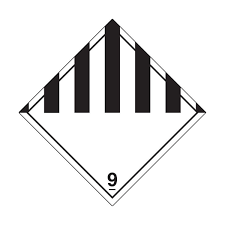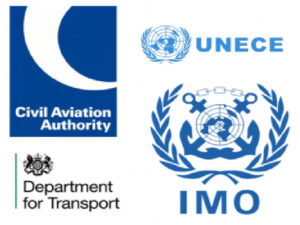Dangerous Goods Class 9
Dangerous Goods or hazardous materials may be purely chemical, a mixture of substances, or manufactured products which can pose a risk to people, animals and the environment if not properly handled with care whilst in use or in transport.
Before transporting any item, you need to ensure you know and understand the nature of your goods and if they fall into this classification.
Continuing our in-depth look at the 9 classes, we now look at the classification for Miscellaneous materials.
Class 9 Miscellaneous
Class 9 are substances which don’t meet the criteria for any of the other 8 hazard classes, but are still sufficiently dangerous to be classed as Dangerous Goods.
Substances in this class can be carcinogens, asphyxiants, irritants, a fire risk and substances that are environmentally hazardous.
Items that typically fall into this category:
Aviation regulated liquids and solids – any material which has narcotic, noxious, irritating properties that could cause discomfort to the passengers and crew that are on board an aircraft.
Magnetized Materials – any item that has a magnetic field strength sufficient to cause a compass deflection of more than 2 degrees. These items may interfere with the navigation of the aircraft or vessel.
Elevated Temperature Substances – any solid or liquid that must be transported at a temperature equal to or exceeding 100°C for liquids or equal to or exceeding 240°C for solids. Such as molten aluminium, molten sulphur, molten glass, asphalt, and tar.
Environmentally Hazardous Substances (EHS) – are liquids or solids that are a pollutant to the aquatic environment. The basic elements for the classification of EHS are:
a) Acute aquatic toxicity
b) Chronic aquatic toxicity
c) Potential for actual bioaccumulation
c) Potential for actual bioaccumulation
Genetically Modified Organisms – GMO’s or GMMO’s. – These are organisms or microorganisms that have been re-engineered in a way that is not natural to the original substance. Includes modified live animals and vaccines.
Lithium Batteries – Are one of the most moved articles in this class. Frequently used in portable consumer electronics and increasingly in battery-powered vehicles. In some conditions, they can be dangerous and can pose a safety hazard and may contain a flammable electrolyte. Class 9 includes lithium ion and lithium metal batteries.
Carbon Dioxide, solid commonly known as Dry Ice is solid carbon dioxide. As it dissipates it gives off carbon dioxide gas which is an asphyxiant and may cause death in a confined space. If it is contained in a package that package must be vented.
Other types of items in this hazard class are:
Asbestos which is commonly found in building supplies and in items such as talc.
Oxygen cylinders and resuscitating equipment and pyrotechnic signalling devices.
Lifesaving appliances also are within Class 9 as they may contain compressed gas.
Any corrosive substances that react to any of the above mentioned conditions are forbidden from any movement by sea, road, rail and air.
Class 9 Miscellaneous Symbol
Class 9 Goods need to carry the correct label when being transported.

Logicom Hub provides training for the shipping of Class 9 Miscellaneous. For more details contact us or see our course details.
Read about Class 8 here




